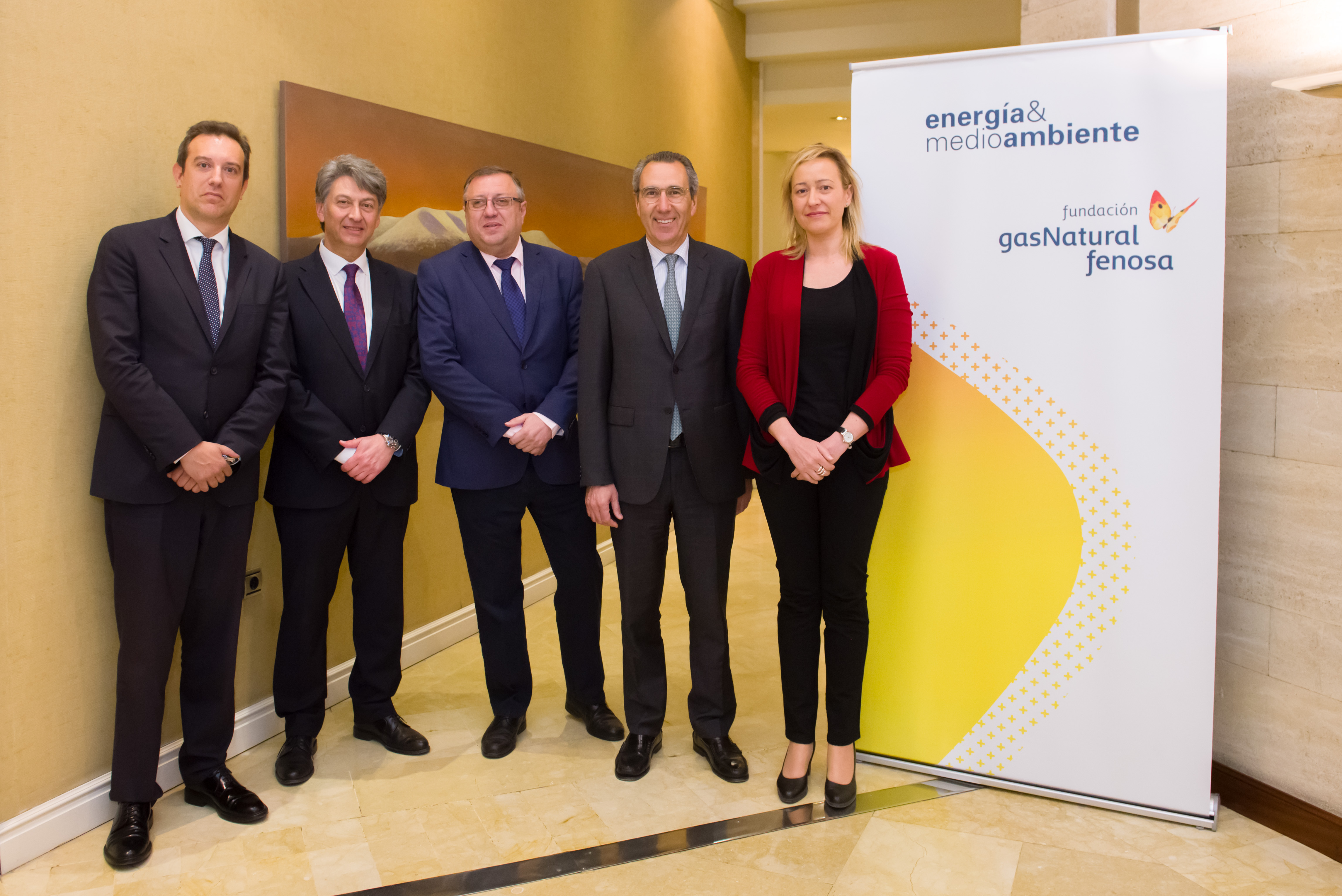Electricity storage, the key for developing renewable energies, electric cars and smart grids
A seminar organised today in Zaragoza by the Gas Natural Fenosa Foundation in collaboration with the regional government of Aragon saw several experts looking into solutions for improving electricity-storage technologies.

The regional government of Aragon’s Minister for Economy, Industry and Employment, Francisco Javier Abajo, and the Gas Natural Fenosa Foundation's Managing Director, Martí Solà, officially opened today’s seminar, entitled Electricity storage, which was attended by over 100 professionals. The seminar saw several experts discussing and debating some of the electricity-storage technologies being developed from a variety of mechanical, chemical, electro-chemical, thermic and electro-magnetic systems.
According to the Gas Natural Fenosa Foundation’s Managing Director, Martí Solà, one of the energy sector's main challenges on a global scale is electricity storage. “We still don’t know how to store electricity efficiently and cheaply, and this is forcing us to consume electricity immediately after it has been generated and constrains the entire energy system,” he explained. He also pointed out that it was having a decisive impact on three brand-new elements of great importance: renewable energies, electric vehicles and the new smart electricity grids. “None of these three initiatives will be able to make any significant progress without better electricity-storage systems,” he remarked.
The Director of the Catalan Institute for Energy Research (IREC) and Professor at the Universitat de Barcelona, Joan Ramón Morante, presented the book El Almacenamiento de la Electricidad (Electricity Storage) published by the Gas Natural Fenosa Foundation. “The book examines the various electricity storage systems that are being developed around the world and the impact these technologies are having on the efficient and competitive development of smart electricity grids, electric vehicles and renewable energies,” Morante explained.
According to the Director of GAS NATURAL FENOSA's Hydraulic Unit, Jordi Vich, “reversible hydraulic power plants are an excellent option given that we are dealing with a fully mature energy that enables the storage of enormous quantities of energy, reaching voltages a little over 1000 MW, and great operational flexibility.” Besides that, he stated that with a loading-unloading cycle ration in excess of 75% and a useful life-cycle of over 50 years, they are one of the most economically competitive options.
The General Manager of Albufera Energy Storage, Joaquín Chacón, stated that the forecast growth of the battery sector, whose business turnover is expected to double over the coming five years, was predicting a significant growth in job numbers (over a million new jobs expected in Europe) and in the level of well-being for citizens. “Electric vehicles and the new trends in managing energy in buildings and households have been promoting new business models and strong investments,” the expert said, adding that “we are still using batteries invented 150 years ago, though the Lithium-ion is the strongest card we’ve presently got up our sleeves on the technological level.”
The Manager at GAS NATURAL FENOSA’, Alezeia González, explained how power-to-gas technology helps prevent renewable-energy spillages by using surpluses for producing natural gas, which is injected into a gas system, thereby allowing long-term storage. Power to gas is still a technology under development, though pilot projects being run in the European Union have already helped to acquire certain experiences for taking on these challenges, according to the speaker, who then added that “the challenges currently associated with this system are found in the scaling of the technology, the development of more efficient and less costly devices, as well as in an improved integration of the gas system.”
As for the Hidrógeno Aragón Foundation's General Manager, Fernando Palacín, it was his opinion that hydrogen technologies offered great possibilities for obtaining a sustainable fuel from environmental, safety and economic points of view, in addition to their versatility, in conjunction with the other energy-storage technologies. According to Palacín, such technologies also offered an opportunity for developing and improving the competitiveness of their main business and industrial players, by making it possible for them to make a true change in their production models and achieve comprehensive skills.
The Manager of the Area for Energy Storage and Management at Ikerlan, Igor Villarreal, pointed out that “the price of lithium ions has seen a reduction in costs close to 40% over the past few years, which has been opening up numerous opportunities in electrifying various industrial applications, beyond electric vehicles, such as trains, lifts, buses and other applications relating to renewable energies.”
The event was officially concluded by Managing Director for Energy and Mines at the regional government of Aragón, Alfonso Gómez, and the Gas Natural Fenosa Foundation's Managing Director, Martí Solà.
Share